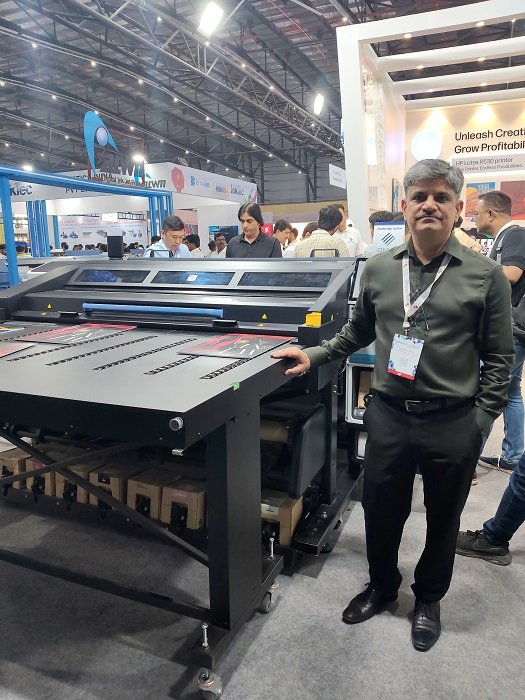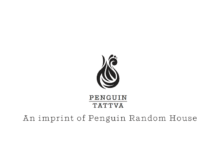HP launched its HP Latex R530, the newest entrant in HP’s all-in-one latex printer line-up at Media Expo Mumbai 2025. Vitesh K Sharma, Country manager – Large Format Business – IBSL, HP India Sales said that while the HP Latex R530 printer is making its global debut, India is the first country where it’s being showcased.
“We’re calling it an all-in-one latex printer because it’s designed to handle both flexible and rigid media. What makes it unique is its ease of use—you can switch between rigid and roll-to-roll printing in under two minutes. It’s that simple,” he said.
Another major advantage is its compact footprint. Despite being an all-in-one machine, it doesn’t compromise on deliverables in space-constrained markets like Mumbai or elsewhere in India, said Sharma. “That’s a real win, normally, you’d need both a large flatbed and a separate roll-to-roll printer. Here, one device does the job of both.”
Saving space, time, and labor
HP says the machine reduces the needed manpower since roll-to-roll and rigid printing would usually require separate operators—and for rigid jobs on a flatbed, at least two people are needed just to handle the media setup. With the R530, according to HP, one operator can manage the whole operation.
The printer supports hot loading—so there’s no need to stop between jobs to reload media. In comparison with traditional systems, where a job might take 1 hour 45 minutes, the new printer could complete it in an hour, according to Sharma, “That’s a significant time saving.”
4th generation latex inks
Like the rest of HP’s latex range, the R530 uses HP’s 4th generation latex inks, which are certified sustainable. These inks are claimed to have the widest color gamut in the segment backed by certifications like UL Ecologo.
The new printer targets small and medium PSPs — who are already using roll-to-roll and looking to diversify. “For print service providers (PSPs) looking to scale from roll-to-roll into rigid applications, you’re getting high-value, high-end applications without investing in multiple complex systems,” Sharma said.
Applications displayed
At the expo booth, HP showcased several applications to demonstrate its versatility. For instance, it white ink directly printed onto black and clear acrylic, which are highly in demand for commercial spaces like offices and malls.
Other rigid media HP showed include brushed aluminium—where the ink doesn’t mask the natural texture—and ACP panels for outdoor applications. “You can print on foam board, vinyl, sun board, aluminium, wood and more. Even textured materials like wood retain their grains since the ink is absorbed rather than forming a thick layer over the surface,” Sharma said.
Acoustic and infrastructural panels
One of the exciting applications is acoustic panels, particularly relevant in meeting rooms, cinemas, and office spaces. Since the latex ink is absorbed into the material, it won’t peel off or scratch easily—something that’s common with thicker, non-latex inks.
“We’re also seeing growth in infrastructure applications—like highway signage, petrol stations, and public utilities. As India invests in roadways, airports, bus depots and railway stations, the demand for durable, reflective signage is set to grow. Our latex inks work across all these substrates without needing a different formulation, and crucially, maintain the reflectivity of safety signage,” Sharma said.
For many PSPs, day-to-day operations still rely heavily on pen and paper. HP’s PrintOS Production Hub brings automation to these workflows. They can track all jobs, know what’s due when, and monitor machine usage in real-time.
Growth outlook for Indian signage
Sharma, cited a recent Dentsu study, that apparently says that India’s advertising industry is projected to grow by 6.5% in 2025. Infrastructure remains a key driver—new roads bring not only traffic signage but also retail and hospitality outlets, from local eateries to global fast-food chains. Similarly, redevelopment of airports, railway stations and bus depots present opportunities.
“Interestingly, over 60% of premium brand sales are now coming from non-metro markets, where quality signage solutions are still under-penetrated. That’s where we see a lot of untapped potential,” Sharma said.


















